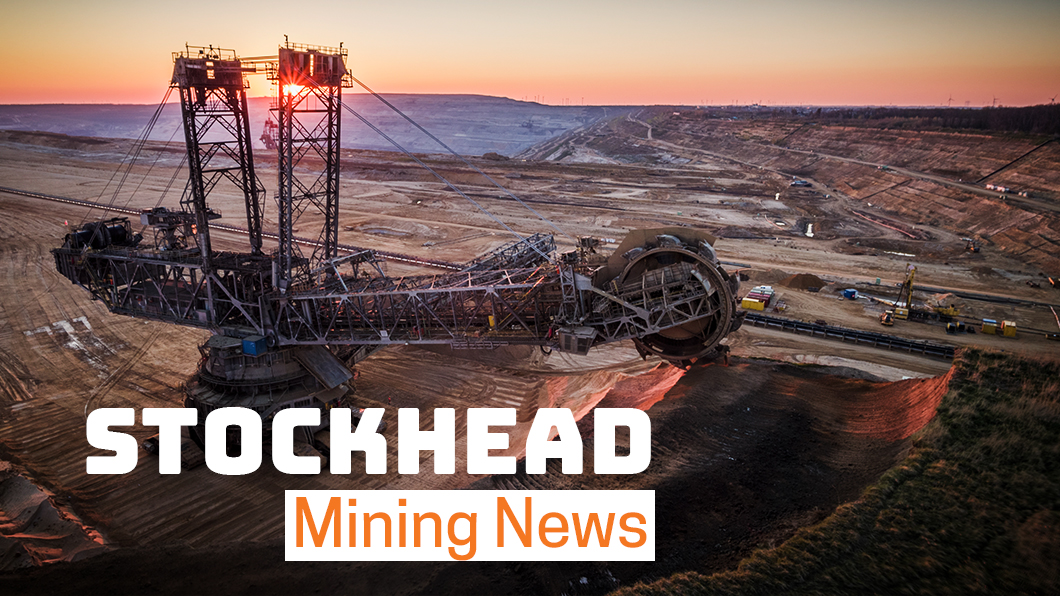Sand wars: This humble resource is a monster in the making

Pic: Schroptschop / E+ via Getty Images
What resource had well-known investor Tolga Kumova feeling just a little hot under the collar earlier this year and is in such demand that organised gangs are fighting over in some parts of the world?
If you answered anything other than silica sands, maybe you should stick around and find out why…
Silica sand will creep up on all of us @FarmerZoz66 https://t.co/0ivVRx6eTn pic.twitter.com/Jgab8RagWb
— Tolga Kumova (@KumovaTolga) March 24, 2021
Sand is the second most consumed natural resource in the world, a fact that is rather obvious once you consider that it is used for construction purposes.
Between 40 billion to 50 billion tonnes of sand are used globally for construction every year, or about 10 times the amount of coal, the next highest bulk commodity traded on a global scale.
This demand is so high that it far exceeds the natural rate at which it is being replenished by the weathering of rocks.
Highlighting how valuable sand is becoming, gun battles have broken out in some parts of the world over the material.
And before you ask, desert sand is completely useless as the grains are too smooth and rounded to lock together to form stable concrete.
Not all sand is equal
For all that construction sand demand is high; demand for high-quality silica sand is even higher.
So, what makes silica sand different from other types of sand and why is it in such great demand?
For silica sand to be considered, well… silica sand, it has to be the high-grade stuff.
We’re talking at least 95% silicon dioxide with less than 0.6% iron oxide, which contrasts with the far more common construction sand that typically has up to 80% SiO2 and varying amounts of other minerals such as iron and potassium.
This high-grade material is valued for hardness as well as being chemically inert.
Commonly used for glassmaking, whether it be flat glass for building and automotive use or container glass, it is also ground up for the production of fibreglass.
Higher grade silica sands are used for the construction of solar panels, semiconductors, and the manufacturing of electric vehicle components.
Perpetual Resources executive chairman Julian Babarczy told Stockhead that the robust underlying demand for the material combined with sources of high-quality supply being hard to locate made the silica sand markets extremely strong.
“The emergence of the PV solar cell cover market, which needs very low iron sand, is only making the market tighter,” he added.
There’s even research ongoing into the use of silicon sand for energy storage that promises to be much cheaper than using lithium-ion batteries.
Investor interest
This has not gone unnoticed by investors with Babarczy noting that there has been a definite shift in interest for silica sand companies from the investment community in the past year.
“We have seen significant interest from family office and smaller institutional investors, who are starting to ask informed questions such as those relating to product specification and applicability of particular grades and impurity profile to specific end markets rather than just questions of how big our sand resource size is,” he explained.
“There is a much greater awareness of key demand drivers supporting the industry’s growth, and of some of the key drivers of ultimate profitability, such as logistics costs and access to market.”
The number of ASX-listed companies in the sector has also grown accordingly.
At the beginning of 2020, there were just five companies with silica sand assets. Their numbers have nearly doubled to nine while several of the more established companies are already on the fast track towards starting production.
So just what have these companies been up to?
ASX silica sand companies
Australian Silica Quartz Group (ASX:ASQ)
While the company’s recent focus is on the Sovereign nickel-copper-PGE project that is operated by DevEX, it remains interested in developing its Albany White Hill silica sand project in Western Australia.
ASQ defined a maiden resource of 11.6 million tonnes grading 99.9% SiO2 with less than 50 parts per million iron in January 2021.
However, it blamed unusually high international bulk freight rates associated with the COVID-19 pandemic for hampering efforts to market the product to the Asian glass market.
Carbine is one of the silica sand newcomers, acquiring the Muchea West silica sands project just 40km north-northeast of Perth in July.
It subsequently outlined an exploration target of between 800 million and 1,030 million tonnes grading between 99.6% and 99.9% SiO2.
Previous exploration includes 82 drill holes that returned assays of more than 99% silica.
Better known for its uranium assets, Cauldron is also new to the sands party, wrapping up its acquisition of the Ashburton Sand Project at the mouth of the Ashburton River in June this year.
Unlike the higher grade sands targeted by the other companies, Cauldron’s river mouth sand licences are expected to host (still high-quality) silica sand that’s suitable for use in cement production.
Diatreme is focused on developing its Galalar high purity silica sand project in north Queensland that targets the solar PV market.
Auger drilling is currently underway at the high priority Cape Flattery exploration areas that is expected to define a new silica sand resource that will add to its existing resource to the south.
The company recently upgraded resources at Galalar by 22% to 75.5 million tonnes grading 99.16% SiO2.
Notably, more than half of this, or 43.12Mt at 99.21% SiO2, is in the very high confidence Measured category.
Work is underway to advance the regulatory approval process.
While its initial scoping study had envisaged a project processing 950,000tpa of raw silica to produce 750,000tpa of marketable silica product, its current environmental impact statement allows for the expansion of raw silica processing to 1.5Mtpa.
Another of the new silica sands plays, Industrial Minerals relisted on the ASX in July with a package of sand assets to which it subsequently added the Stockyard silica sand project, which consists of two exploration licence applications.
The licence applications are located close to the Arrowsmith and Beharra projects held by VRX Silica and Perpetual Resources respectively.
In August, the company secured an aircore rig to carry out up to 10,000m of drilling across the Gingin, Stockyard, Unicup and Quins silica sand projects.
This will test new targets and validate historical drilling undertaken on each project and to enable the company to assess the volume and quality of the in situ white sands.
Industrial Minerals is one of two silica sands that Kumova recently said he was keeping an eye on, with the well-known investor noting that it could have an easier time with environmental permitting as part of its deposit is on farmland.
Over in Queensland, assays from Metallica’s August 2021 drilling program have confirmed significant intervals of high purity silica sand at its Cape Flattery silica sands project.
Notable results include 20m at 99.65% SiO2, 25m at 99.53% SiO2, 27m at 99.34% SiO2 and 25m at 99.48% SiO2, all of which start just under the surface.
Estimation work for an upgraded resource is expected to start this month along with metallurgical testing of the high grade, high purity sand.
Metallica’s Cape Flattery project is adjacent to Mitsubishi’s identically named Cape Flattery Silica Sand mining and shipping operation.
Exploration to date has confirmed that the sand dunes within the company’s assets host high purity silica sands with an in-situ quality that is comparable to Mitsubishi’s mine.
This places the project close to existing infrastructure.
Perpetual operates the Beharra project, for which the company is currently working on a scoping study.
Babarczy noted that in the next 12 months, the company expects to release results from its white sand tests, which he believes would show a significant reduction in impurity profile, increasing end market value for Beharra sand.
He also expects updates on discussions with offtakers in the coming months, the release of the direct shipping ore scoping study before Christmas, and a pre-feasibility study update on processed white sand in the first quarter of 2022.
Perpetual also happens to be the second of two silica sand companies that Kumova is watching.
Suvo Strategic Metals (ASX:SUV)
With all the progress that Suvo has made in recent months on its kaolin projects, you may be forgiven for thinking that it has been around for some time.
However, the kaolin and silica sands player we know has only actually commenced trading in August last year.
The company is poised for the imminent release of the maiden mineral resource for its Nova silica sands project on the outskirts of Eneabba, Western Australia.
Test work on sands from the project have already confirmed their suitability for glassmaking and foundry sand.
A significant portion of Nova sand also reports to the very fine silica flour size fraction, which opens up the potential to supply the specialised markets for fillers and wellhead cement additives.
VRX Silica is one of the most, if not the most advanced, silica sand plays on the ASX.
The company operates the Arrowsmith, Muchea and Boyatup silica sand projects.
Of these, environmental approval is currently being sought for both the Arrowsmith North and Arrowsmith Central projects.
Arrowsmith North is currently expected to produce 53Mt of silica sand over 25 years to generate total sales of nearly $2.7bn, generating net present value (NPV) and internal rate of return (IRR) of $243.3m and 77% respectively.
Its counterpart is also an attractive project in its own right with a BFS estimating NPV and IRR of $147.6m and 60% respectively for a project with an ore reserve of 18.9Mt at 99.6% SiO2.
At Stockhead we tell it like it is. While Suvo and VRX are Stockhead advertisers, they did not sponsor this article.
Related Topics
UNLOCK INSIGHTS
Discover the untold stories of emerging ASX stocks.
Daily news and expert analysis, it's free to subscribe.
By proceeding, you confirm you understand that we handle personal information in accordance with our Privacy Policy.








